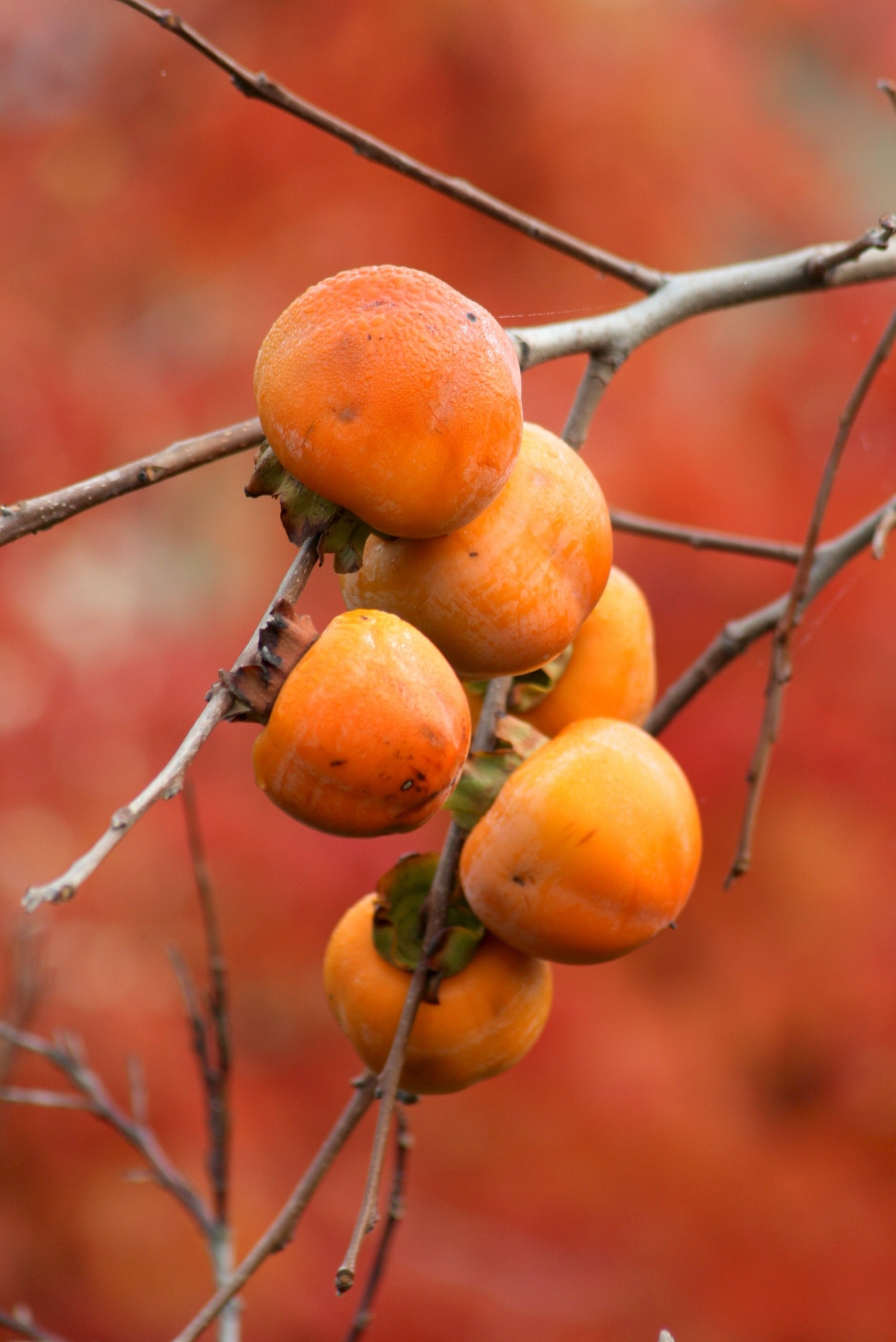One of my first cousins died of cancer last week. Sadly, my extended family has never been close the way my husband’s is. I was next-to-youngest of the twelve cousins, with an age range of almost thirty years between oldest and youngest. As a child, the four-year difference between me and Allen seemed enormous. A half-century later, it seems only the briefest of spans. I have two memories of his childhood antics. The first involved holding a firecracker until it exploded, resulting in blistered thumb and forefinger. The other leads me to today’s blog, concerning the lowly native persimmon.
It was a family tradition to gather at our maternal grandparents’ home for Thanksgiving and Christmas. Theirs was a humble life, with a temperamental wood-fired iron stove in the kitchen and a privy in the edge of the woods. A woodstove heated the dining room, which was used as a common room. The fireplace in the living room was rarely lit. The kids were usually told to go outside to amuse ourselves. A large native persimmon tree stood at the corner of the pasture. It was always loaded with golf-ball sized fruit that were equal parts pulp and seed. By Thanksgiving, most of the hard, green fruit had turned orange. The ripest ones had softened, wrinkled a bit and fallen to the ground, where I and the other cousins picked them up and ate them. We were careful to avoid the prickly husks near the stem. Part of the ritual was seeing how far one could spit the seeds. On a dare, Allen ate a green one. His facial expression told me all that I needed to know about green persimmons. Later, my mother explained to me that frost must touch the fruit before it became edible. While the “touched by frost” part wasn’t factual, an unripe persimmon is packed with tannins and extremely astringent. And by astringent, I mean inedible.
Native persimmon (Diospyros virginiana, pronounced dy-OS-pe-res ver-jin-ee-AY-nah) is not to be confused with Asian persimmon, Diospyros kaki. The Asian forms are larger, mostly seedless, and many can be eaten while still firm. They are less cold-hardy than the native species. I have a couple of the Asian-type trees planted in my orchard, but it will be a few years before they produce anything edible. The native fruits have been enjoyed for many years by humans and animals. Early and Native Americans dried them or used fresh pulp in breads and puddings, or even brewed leaves into a tea. During the Civil War, Confederate soldiers roasted the seeds and used them to brew a coffee substitute. Deer, coyotes, bears, foxes, and skunks enjoy fallen fruit. They are a favorite treat of the opossum. Flowers and fruit attract a range of pollinators. My husband was shocked when he witnessed me eating fallen fruit from a tree outside his childhood home. He described persimmons as “food for the pigs” and labeled them as disgusting. My energetic seed spitting may have contributed to the disgusting assessment.
Native persimmon is tolerant of poor soil, wind, and heat. It performs best in full sun to partial shade, in moist, sandy soils. I have seen some fabulous specimens growing in heavy clay and half-shade. Trees can reach heights up to 80 feet and widths to 35 feet, although their growth rate is slow. The dark wood is dense and hard, and has been used for golf club heads and pool cues. Persimmon trees grow a deep tap root which makes them difficult to transplant. Trees are either male or female (“dioecious”). Both are required to produce fruit. Trees do not produce well when young; heaviest fruit set is on 10-year-old trees and older. Often, fruit persists on the tree after the leaves have fallen, looking like orange decorations. Tree bark is distinctive, with a square pattern sometimes called alligator bark. They are hardy in zones 4 through 9. Fall color is attractive, so enjoy trees in your home landscape even before they become fruit-bearing. Several named cultivars are available with exceptional fall color or larger fruit. Try to locate trees that are local to your area. Northern-sourced trees don’t do well in the south and southern-sourced trees may not produce mature fruit in the north.
There is a colloquial weather prediction based on the inside of a split persimmon seed. While this is as reliable as the wooly worm, here is a summary, just for funsies: If the inside of the seed has a white streak that looks like a fork, winter will be mild. A spoon-shaped streak predicts heavy snowfall. A knife-shaped streak indicates cold winter winds that will cut like a knife.
This tasty morsel is ready to be enjoyed, either by me or by wildlife.
The orange color is deceptive. These are not quite ready to eat.





